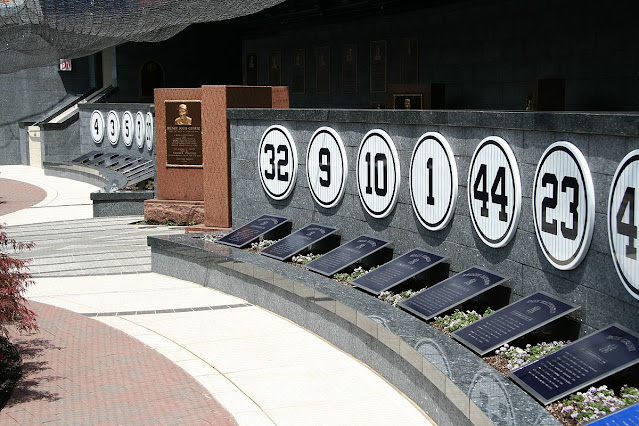The Curious Case of Gleyber Torres
The New York Yankees have fallen well short of expectations in 2021 and there's plenty of blame to go around. Sloppy play in the field and even sloppier play on the base paths have been commonplace. But those things have historically not been a team strength for the Yankees. The starting pitching behind Gerrit Cole has been inconsistent and lacking in depth. That shouldn't be a surprise to anyone paying attention to their lackluster offseason though. Even the bullpen - a supposed team strength - has imploded recently, costing the team two games against the Red Sox they desperately needed last weekend. When most of the relievers heavily relied upon are on the wrong side of 30, that's bound to happen.
The biggest surprise contributing to Yankee failure this year is the futility of the lineup. Two big bats in particular have simply not pulled their weight thus far. We covered the struggles of DJ LeMahieu in some detail here, which leaves us with Gleyber Torres. In 2019, a 22-year old Torres crushed 38 home runs, drove in 90 runs and posted a healthy .278/.337/.535 slash line while splitting his time between shortstop and second base. He seemed on the verge of becoming a superstar capable of carrying the team on his shoulders. Since that star turn, he's hit a grand total of nine home runs to go with a below average 92 OPS+. So why just two years later does he seem a lost cause?
Hypothesis 1: Gleyber's still young, so he must lack discipline at the plate
While it's true that Gleyber Torres hasn't exactly been a technician at the plate this year, it's also true that he wasn't that in 2019 either when he was a viable MVP candidate. In fact, Torres' batting eye has improved quite a bit over the past two seasons.
The simplest way to highlight Gleyber's improvement is his jump in walk rate from 7.9% in 2019 to nearly 11% thus far in 2021. Thanks to those extra walks, Torres has been able to keep his on-base percentage relatively steady (.337 in 2019, .330 in 2021) despite a 30+ point drop in batting average over that time.
A deeper look into Torres' zone and contact percentages offers further evidence that his plate discipline is getting better. According to the data available at Baseball Savant, he's being more selective by swinging less overall, making contact at roughly the same rate that he did in 2019, and has significantly reduced the number of pitches he chases outside of the strike zone.
So Torres is seeing the ball just fine. It appears that his struggles wouldn't have anything to do with swinging wildly or being completely fooled by pitchers. What else could be ailing the young shortstop?
Hypothesis 2: Gleyber has joined the exit velocity/launch angle revolution and it's ruined his swing because analytics are the devil, or something like that
This is an interesting theory, and one that some baseball fans would LOVE to be true. Let's see if it has any merit. There's no denying that in 2019 Torres hit the ball with an ideal combination of velocity and angle with regularity. His total of 43 barrels - balls hit in that velocity/angle sweet spot - was in the top 20% of MLB hitters. That didn't exactly put him in elite company, but he was no slouch either when it came to baseball's new revolution. And with those results, who would argue with his approach?
Did Torres get too aggressive with chasing exit velocity and elevating the ball to the point that it's ruined his swing? If so, we'd expect to see a sharp increase in average exit velocity and launch angle in 2021 since we already know that he's not struggling to make contact, but:
Gleyber Torres is decidedly NOT embracing the combination of exit velocity and launch angle as a key to success this year. The numbers here indicate that while his contact rates have remained steady, that contact is of lesser quality in 2021. Obviously, his traditional stats bear this out too, as evidenced by his anemic .346 slugging percentage this year.
Wait, so the solution to Torres' problems this year is to hit the ball harder and get it elevated a bit more, just like he was doing in 2019? Make up your mind!
Hypothesis 3: Gleyber needs to re-join the exit velocity/launch angle revolution to get his swing back on track because sometimes analytics are useful, or something like that
Just in case you're not convinced that Torres should make an adjustment to get the ball in the air more, let's take a look at his batted ball type breakdowns for 2019 and this year.
Gleyber has improved significantly in one area here. He's cut his pop up rate nearly in half, which is good. But you can make the case that in an effort to not get under the ball so much, he's getting on top of it too much. Instead of replacing those pop-ups with well-hit fly balls and line drives, they're now becoming ground balls. Ground balls that are being hit right into the teeth of a shifted fielding alignment for easy outs. It's no coincidence that the sharp increase in ground ball rate we see here coincides with a weak contact rate that has more than doubled since 2019.
The equation is pretty simple. Torres' big drop in both batting average and slugging percentage is a direct result of hitting more ground balls and making weaker contact. The best prescription for Gleyber's fever is more cowbell exit velocity with a pinch of launch angle. I promise it won't ruin his game.
All data given in the tables included are from Baseball Savant.





.jpg)


Comments
Post a Comment